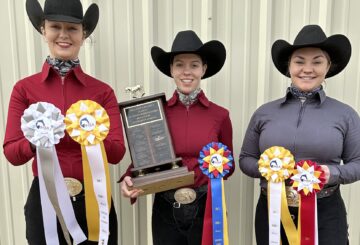By Bob Confer
This is the time of year when many of us take to filling our bird feeders and enjoying the company of our feathered friends, birds like chickadees and jays that will really brighten up the long winter to come.
That’s what makes it so sad when you occasionally discover a pile of feathers and maybe a little blood next to your feeders.
Something ate your friends, but what?
Chances are it was either a sharp-shinned hawk or a Cooper’s hawk.
Identifying these hawks
The sharp-shinned and Cooper’s hawks are strikingly beautiful birds of prey, skinny and sleek with a slate-colored back and cap (juveniles are brown-backed) and a white breast that sports rusty bars. The underside of their long tail has defined black bands on a white background.
To the casual birdwatcher, these species are barely indistinguishable from one another. But, after you’ve seen a few you will be able to identify them by size alone. Sharp-shinned hawks are small, just 10 to 14 inches long. Cooper’s Hawks are noticeably larger, at 14 to 20 inches in length.
Both species are impressive fliers. The sharp-shinned is especially fast, its smaller frame and long tail giving it a great maneuverability and the ability to make sharp turns at even its highest speeds. You will often see them rocket through your yard or a small woodlot. The Cooper’s hawk is a tad slower, yet still unbelievably fast at times. When not dive-bombing their prey, you’ll see them searching the landscape with a constant flap-and-glide, flap-and-glide.
The infamous chicken hawk
The Cooper’s hawk is well-known by another name: “the chicken hawk.” That moniker came from its propensity for raiding farms and snatching up chickens, something it is quite adept at because chickens aren’t the most defensive of birds.
Raising chickens for eggs is now more than just a farm thing as it has become incredibly popular, even “sexy”, for rural and suburban residents to host chicken coops. Many a newfound egg farmer has found their flock decimated by Cooper’s hawks – as if foxes, coyotes, and minks weren’t bad enough.
Cooper’s hawks will raid bird feeders, too, preferring to latch onto larger birds like mourning doves and blue jays.
The smaller sharp-shinned hawk is the bigger scourge of feeding stations, snatching up chickadees, nuthatches, cardinals and goldfinches. They can come out of nowhere like a bolt of lightning and catch many a flock of songbirds off guard. They attack with such precision and force that you will often see an explosion of feathers.
I can attest to their surprise attacks. One spring morning some years ago while turkey hunting I had to remove a glove and tend to some equipment. Somehow, a sharp-shinned hawk saw my moving hand (the only fleshy looking thing around because I was otherwise covered head to toe in camouflage) and it came out of nowhere and dive-bombed my hand, thinking it was a meal, which I safely pulled away at the last millisecond. Scary but exciting.
The Comeback Kids
For far too many years, Cooper’s hawks were shot and killed by farmers who wanted to protect their chickens. This, in conjunction with widespread use of some nasty pesticides, led to a major decline that was noticeable throughout the 1940s, 50s, and 60s. Those same pesticides inadvertently poisoned sharp-shinned hawks, too.
But as those poisons (which appeared in their prey and then affected reproductive success) were taken off the market and laws for killing hawks strengthened, their populations rebounded. When I was a kid, both hawks were still pretty rare in Western New York, but now, they could be considered common. The latest edition of the New York breeding bird atlas which came out in 2008 showed Cooper’s hawk populations grew by 4 percent per year from 1980 to 2005 while sharp-shinned hawk populations grew by a total of 6.3 percent from 1966 to 2005.
Now, you can find them anywhere – from forests to backyards to villages to cities.
Keeping them under control
Many birdwatchers probably wonder how to keep these hawks under control and stop them from preying on their friends. You really can’t. I shoo them away every chance I get. Most of the time it works, but these hawks have become increasingly brazen. Last winter I could stand underneath a Cooper’s hawk that frequented my yard, yell at him and he’d only give me the “yeah, OK, Confer” look.
There are some cages on the market that go over the top of sunflower or nyjer tube feeders that will protect finches from overhead and lateral attacks.
But, you’re probably better off letting Mother Nature do her thing (something you are enabling, by the way, by concentrating birds in your yard). Yes, it can be ugly. It can be sad. But the hawks have to eat, too. And that can be beautiful and interesting in its own way. It’s the circle of life.






